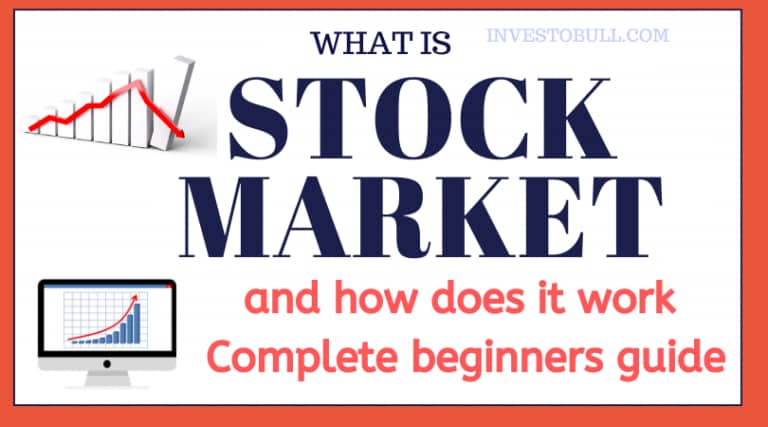How to read stock charts like a pro? Well, welcome to the stock market jungle, where the charts dance and the numbers twirl. If you’ve ever sat in front of a stock chart feeling as lost as a tourist in a foreign city, don’t fret! In this post, we’ll guide you through reading stock charts like a pro. You’ll learn techniques that not only make you savvy but also add a sprinkle of charm to your investment strategy.
—
Why You Should Care About Stock Charts
“Prices are what you pay. Value is what you get.” – Warren Buffett
Understanding stock charts is not just for the Wall Street elite. It’s for anyone who wants to make informed decisions based on data rather than gut feelings—because let’s be honest, gut feelings got you in trouble in high school math class too.
- Charts provide visual information: They turn complex data into something digestible.
- Identify trends and patterns: See where a stock has been and where it might go.
- Support and resistance levels: Know when to buy and when to run.
Now that we’ve established why stock charts matter, let’s dive into the techniques.
—
Technique #1: Master the Basics of Stock Chart Types
Before you can impress your friends while discussing stocks, you need to know the types of charts available. There are three main types:
1.Line Charts: The simplest form, connecting closing prices over time. Great for getting a quick overview, like a toddler’s drawing of a house.
- Bar Charts: These offer more data, showing the high, low, and closing price for each time frame. It’s like the detailed version of that toddler drawing—you can see how many crayons they used.
- Candlestick Charts: Each candle shows price movements over a specific period. These can be as beautiful as art, conveying emotion, market sentiment, and winks from the market gods.
Understanding these types sets the groundwork for further analysis.
—
Technique #2: Get Cozy with Time Frames
Time frames can make or break your stock analysis. Whether you prefer to think in minutes, hours, days, or years, you’ll find a time frame that suits you.
- Daily charts: Ideal for short-term trading.
- Weekly charts: Great for medium-term investors.
- Monthly charts: Try them if you’re in it for the long haul.
Remember, short-term charts can be volatile. Trying to figure that out may feel like solving a Rubik’s Cube while blindfolded.
—
Technique #3: Identify Trends—The Market’s Version of “Will They or Won’t They”
You’ve seen it in romantic comedies: the inevitable will-they-won’t-they moments. The market has trends too—uptrends, downtrends, and sideways trends.
- Uptrends: Prices are making higher highs—this is the stock equivalent of a rom-com with a happy ending.
- Downtrends: Prices create lower lows—a stock market tragedy where the bank account weeps.
- Sideways trends: Prices stagnate; it’s like that couple who knows they should break up but keeps hanging out for “closure.”
Finding these trends helps you decide if it’s time to buy a ticket to the next big show or walk away for good.
—
Technique #4: The Holy Grail of Moving Averages
“An investment in knowledge pays the best interest.” – Benjamin Franklin
Moving averages are like that reliable friend who knows how to filter out the noise. They help you see the trend in a less choppy manner.
- Simple Moving Average (SMA): Averages closing prices over a specific period. Think of it as the “getting a month’s worth of coffee” at once.
- Exponential Moving Average (EMA): Gives more weight to recent prices, making it a faster-reacting trend line. This is like that friend who just can’t wait to tell you the hottest gossip.
Using moving averages can help you track momentum and identify entry and exit points.
—
Technique #5: Support and Resistance—The Stock Market’s Fort Knox
Support and resistance levels are crucial. Think of them as invisible shields created by the market, keeping prices either bounded below or above.
- Support: The price level where demand is strong enough to prevent the stock from falling further—a comforting friend who won’t let you hit rock bottom.
- Resistance: The level at which supply exceeds demand, stopping the price from rising—a brick wall at the end of your joyride.
Knowing these levels can help you plan your trades and avoid grievous online shopping binge moments—because who hasn’t regretted that?
—
Technique #6: Volume in Stock Chart
Volume is simply the number of shares traded during a specified time frame. It’s essential for validating trends.
- High volume: Confirms a trend—you know the crowd is behind it, cheering loudly like at a football match.
- Low volume: Suggests less conviction. Consider this akin to crickets in a silent room.
Remember, always watch volume because it’s the lifeblood of a trend.
—
Technique #7: RSI—The Market’s Mood Ring
The Relative Strength Index (RSI) is a nifty indicator that measures the speed and change of price movements.
- Above 70: Stocks may be overbought. It’s a sign of potential selling—time to be the sensible voice of reason.
- Below 30: Stocks may be oversold. This is when you might think about making a move, akin to finding a sale on that perfect outfit.
Using the RSI can help you time your buy and sell decisions better. The market’s mood ring is more reliable than your friend’s dating advice, trust me.
—
Technique #8: Chart Patterns—The Stories They Tell
Stock charts have their own tales to tell. Candlestick patterns, triangles, flags, and head-and-shoulders—the stock market is basically “Game of Thrones” with less blood.
- Head and Shoulders: A reversal pattern indicating a change in trend; it’s like telling your friend about the “love triangle” that’s about to implode.
- Triangles: These indicate consolidation and can break in either direction—a true cliffhanger moment.
Being able to read these patterns can help you forecast potential stock movements effectively.
—
Technique #9: Fibonacci Retracement—The Art of Prediction
Fibonacci sequences are nature’s way of letting you know this math stuff actually matters! Fibonacci retracement levels can identify potential reversal points.
- Common levels: 23.6%, 38.2%, 50%, 61.8%, 100%.
- Strategy: Use these levels to identify buy points during a pullback in an uptrend.
It’s like using a magic eight ball—wait and see where your stock price may bounce back.
—
Technique #10: Keep Learning and Adapting
“The market is a device for transferring money from the impatient to the patient.” – Warren Buffett
Reading stock charts is not a one-time event; it’s an ongoing journey. Keep up with market changes, news, and technological advancements.
- Continuous education: Webinars, books, and seminars can sharpen your skills.
- Adaptation: Be flexible when strategies change; the market evolves.
An expert trader is never static. Always be ready to adapt your tools as whimsically as the trend itself.
—
FAQs
Q1. How can I start trading with the techniques I learned?**
A: Start small! Apply what you’ve learned to hypothetical stocks first through paper trading—no real money at stake, just your dignity.
Q2. Do I need to analyze every stock chart?**
A: Heaven no! Focus on what industries interest you most. Don’t be that person trying to impress everyone by knowing every stock in existence.
Q3. How reliable are stock charts?**
A: Charts are a tool, not a crystal ball. Use them alongside fundamentals and company news for a well-rounded perspective.
Q4. Is there a perfect strategy that works for everyone?**
A: If only! The best strategy is one that aligns with your personal risk tolerance, investment goals, and time commitment.
—
“Invest in yourself. Your career is the engine of your wealth.” – Paul Clitheroe.
Understanding stock charts is like a rite of passage in the world of finance. It empowers you to make informed, strategic decisions in a market that can often feel chaotic. Embrace these ten techniques and become the master of your stock charting universe.
Even if you’re here for profit or simply want to impress your friends at the next dinner party, knowing how to read stock charts like a pro is a skill that will pay dividends. So, get charting and may the market be in your favor!











https://tadalaccess.com/# what does a cialis pill look like
printable cialis coupon take cialis the correct way cialis pills
what is cialis tadalafil used for: Tadal Access – para que sirve las tabletas cialis tadalafil de 5mg
cialis dosis cialis free trial voucher 2018 or cialis side effect
https://www.google.gg/url?q=https://tadalaccess.com walgreen cialis price
mambo 36 tadalafil 20 mg reviews cialis generic best price and cialis overdose ambrisentan and tadalafil combination brands
generic tadalafil tablet or pill photo or shape cialis 50mg or canadian no prescription pharmacy cialis
http://www.revistasgratis.ws/externo.php?url=https://tadalaccess.com/ cialis leg pain
=cialis+generika]where to get generic cialis without prescription cialis 10mg reviews and cialis on sale cialis sample request form
https://tadalaccess.com/# pictures of cialis pills
cialis india cialis website or buying cialis online canadian order
http://w-ecolife.com/feed2js/feed2js.php?src=https://tadalaccess.com how to take cialis
cialis daily vs regular cialis how to buy tadalafil online and prescription for cialis cialis pricing
comprar tadalafil 40 mg en walmart sin receta houston texas how much tadalafil to take cialis experience
what does a cialis pill look like: TadalAccess – tadalafil with latairis
best place to buy liquid tadalafil is tadalafil as effective as cialis us pharmacy cialis
https://tadalaccess.com/# cialis stopped working
cialis pharmacy: best research tadalafil 2017 – when does cialis go off patent
cialis covered by insurance buy cheapest cialis or purchase cialis
https://www.google.gp/url?q=https://tadalaccess.com price comparison tadalafil
where to buy cialis online side effects of cialis tadalafil and tadalafil with latairis buy cialis free shipping
cialis daily dose cialis for sale over the counter or cialis trial pack
http:”//www.is.kyusan-u.ac.jp/htmllint/htmllint.cgi?ViewSource=on;URL=https://tadalaccess.com” cialis precio
cialis for enlarged prostate buy cialis online australia pay with paypal and cialis buy online canada max dosage of cialis
best research tadalafil 2017: cialis before and after photos – how to buy cialis
tadalafil ingredients TadalAccess dapoxetine and tadalafil
https://tadalaccess.com/# generic tadalafil 40 mg
buying cheap cialis online cialis daily dose or tadalafil citrate research chemical
http://stopundshop.eu/url?q=https://tadalaccess.com cialis efectos secundarios
cialis from mexico cialis from mexico and tadalafil dose for erectile dysfunction cialis tadalafil
can cialis cause high blood pressure: tadalafil vs sildenafil – cialis online pharmacy australia
compounded tadalafil troche life span TadalAccess what is cialis used to treat
https://tadalaccess.com/# price comparison tadalafil
cialis patient assistance cialis difficulty ejaculating or cialis efectos secundarios
https://images.google.pt/url?sa=t&url=https://tadalaccess.com what is the generic for cialis
when will cialis be over the counter how long does cialis last in your system and cheaper alternative to cialis original cialis online
cialis before and after photos cialis soft or cialis tadalafil 5mg once a day
http://www.publicanalyst.com/?URL=tadalaccess.com cialis generics
cost of cialis for daily use what are the side effect of cialis and cialis tadalafil & dapoxetine generic cialis super active tadalafil 20mg
cialis walmart: TadalAccess – buy tadalafil online no prescription
generic cialis vs brand cialis reviews TadalAccess is there a generic cialis available
where to buy generic cialis ?: cialis overnight deleivery – cialis 5 mg
https://tadalaccess.com/# buy cialis generic online 10 mg
cialis before and after photos Tadal Access tadalafil prescribing information
cialis pill canada cialis with dapoxetine or achats produit tadalafil pour femme en ligne
https://maps.google.com.ni/url?sa=t&url=https://tadalaccess.com cialis 20 mg duration
overnight cialis cialis online delivery overnight and canadian online pharmacy no prescription cialis dapoxetine tadalafil buy online canada
cialis walgreens: paypal cialis payment – cialis usa
buying cialis online canadian order find tadalafil or cialis black in australia
https://images.google.com.co/url?q=https://tadalaccess.com tadalafil citrate powder
sildalis sildenafil tadalafil tadalafil daily use and cialis with out a prescription cheap cialis free shipping
cialis overdose cialis commercial bathtub or does cialis lower your blood pressure
https://www.google.ee/url?q=https://tadalaccess.com cialis review
maximum dose of tadalafil pregnancy category for tadalafil and what is cialis used to treat canadian pharmacy cialis brand
cialis 40 mg reviews cipla tadalafil review cialis sell
https://tadalaccess.com/# cialis free trial canada
cialis side effects heart: Tadal Access – what does cialis treat
over the counter antibiotics: buy antibiotics online uk – Over the counter antibiotics for infection
order ed pills: Ero Pharm Fast – cheap ed pills
erectile dysfunction pills online best ed meds online Ero Pharm Fast
https://pharmau24.shop/# pharmacy online australia
best online doctor for antibiotics: best online doctor for antibiotics – Over the counter antibiotics for infection
Online drugstore Australia: Licensed online pharmacy AU – Pharm Au24
Over the counter antibiotics for infection: Biot Pharm – antibiotic without presription
Over the counter antibiotics pills buy antibiotics online Over the counter antibiotics for infection
buy ed medication online: online ed medications – Ero Pharm Fast
https://eropharmfast.com/# ed medications online
buy antibiotics from india: BiotPharm – Over the counter antibiotics for infection
PharmAu24: PharmAu24 – Pharm Au 24
https://biotpharm.shop/# over the counter antibiotics
Ero Pharm Fast Ero Pharm Fast ed pills for sale
Medications online Australia: Discount pharmacy Australia – online pharmacy australia
buy antibiotics from canada: buy antibiotics from india – Over the counter antibiotics for infection
Buy medicine online Australia Pharm Au 24 or online pharmacy australia
http://lovas.ru/away.php?to=http://pharmau24.shop Licensed online pharmacy AU
Online drugstore Australia PharmAu24 and Discount pharmacy Australia Buy medicine online Australia
https://pharmau24.com/# Online medication store Australia
buy erectile dysfunction medication ed treatment online or erectile dysfunction pills online
https://login.mephi.ru/login?allow_anonymous=true&service=https://eropharmfast.com/ cost of ed meds
buy erectile dysfunction medication cheapest ed pills and how to get ed pills erectile dysfunction online
best online doctor for antibiotics over the counter antibiotics or best online doctor for antibiotics
https://www.google.com.mx/url?sa=t&url=https://biotpharm.com buy antibiotics
buy antibiotics online buy antibiotics from india and buy antibiotics from canada antibiotic without presription
buy antibiotics over the counter: buy antibiotics online uk – buy antibiotics over the counter
best online ed pills: Ero Pharm Fast – online ed drugs
best online doctor for antibiotics: BiotPharm – over the counter antibiotics
cheap erection pills buy ed pills online erectile dysfunction prescription
Ero Pharm Fast: buy ed medication – where to buy ed pills
https://biotpharm.shop/# buy antibiotics online
Discount pharmacy Australia Buy medicine online Australia or online pharmacy australia
https://www.google.com.na/url?q=https://pharmau24.shop Buy medicine online Australia
Online drugstore Australia Pharm Au24 and Discount pharmacy Australia PharmAu24
get antibiotics quickly: BiotPharm – buy antibiotics from india
best online ed meds: ed drugs online – how to get ed meds online
cheapest ed online buy ed pills online or what is the cheapest ed medication
https://www.google.ac/url?sa=t&url=https://eropharmfast.com discount ed pills
online erectile dysfunction cheapest online ed treatment and buy ed meds erectile dysfunction pills online
Ero Pharm Fast Ero Pharm Fast cheap ed medicine
best online doctor for antibiotics buy antibiotics from india or buy antibiotics from canada
https://images.google.com.ec/url?q=https://biotpharm.com buy antibiotics from india
buy antibiotics from india buy antibiotics from canada and over the counter antibiotics buy antibiotics over the counter
get antibiotics without seeing a doctor: Biot Pharm – buy antibiotics
best online doctor for antibiotics: over the counter antibiotics – Over the counter antibiotics for infection
ed pills cheap online prescription for ed or ed treatments online
https://image.google.ps/url?q=https://eropharmfast.com low cost ed meds
cheapest online ed meds online ed treatments and cheap erection pills online ed prescription
buy antibiotics buy antibiotics from canada or over the counter antibiotics
https://www.google.ht/url?q=https://biotpharm.com cheapest antibiotics
buy antibiotics online antibiotic without presription and buy antibiotics online buy antibiotics from canada
ed medications online cheapest ed online or get ed meds today
https://images.google.az/url?sa=t&url=https://eropharmfast.com ed prescription online
erectile dysfunction online cheap ed medication and buying ed pills online cheap ed treatment
7p2d1l
vpo4ka
591yto
a69azx
l5s8eu
2b9l88